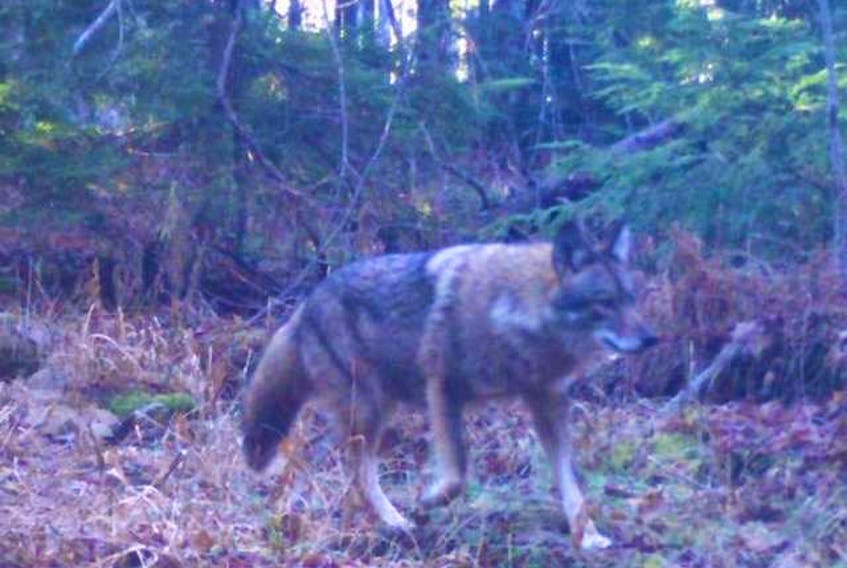PICTOU - A Caribou resident says a large coyote has come a little to close for comfort.
Brendan Nichol of Three Brooks said a coyote he estimates that is about the size of German Shepherd dog has been spotted in the roaming alone in the area and has come dangerously close to his family home.
Going back into the summer, we did lose some chickens and ducks,” he said. “One night when my father went out behind the barn, the dog took off and than it came back really fast. The coyote was coming after it. It looked more like a wolf. Dad stared at it for a bit and took off and the dog went after it again.”
He estimated the coyote was about 20 feet from the family barn which is located close to his home on the same property.
Nichol said he had heard reports since that it has been spotted in other areas of Caribou including Waterside.
The Nichol family decided to put up a webcam on their property about a 10-minute walk from their home on the edge of the tree line and sure enough, the “Caribou Beast” as Nichol likes to call it, was spotted within the first few nights of it going up.
He is thankful that it hasn’t been successful in getting to the farm’s sheep but the family keeps an eye and ear out for the predator.
A Nova Scotia Department of Natural Resources Human-Wildlife Conflict Biologist, Mike Boudreau, said based on the images in the webcam photos, the animal looks like an eastern coyote.
According to Natural Resources, eastern coyotes are normally shy of people and males can weigh up to 50 pounds. They feed on anything available including small mammals, rodents and snowshoe hare but can also eat deer, fawns, sheep, lambs, feral and pet cats as well as dogs. They usually hunt alone or in pairs.
The department says there are ways for homeowners to deter coyotes from coming onto their properties.
For example, trim trees and ground-level shrubs to reduce hiding places for coyotes and for the animals they prey upon. Store bird feeders indoors at night. Clean up spilled birdseed to avoid attracting rodents, small mammals, and other coyote prey. If a person has fruit trees or berries, pick the fruit as soon as it ripens. They can also want to put up fencing to keep coyotes out.
Install motion-sensitive lighting around a yard also helps to discourage coyote visits. Manage compost piles carefully to avoid attracting coyotes. Store garbage in tightly closing, or locking containers, that cannot be opened or tipped over.
Cats and dogs that run free are easy prey. They may actually encourage coyotes to range closer to your property. Safe guard cats, rabbits, and small dogs by keeping them indoors. Larger dogs can be contained by outdoor kennels that are at least six feet high and preferably inset in the ground or in concrete. Never feed pets outdoors and bring dogs indoors after dark. Always walk a dog on a leash.
Fear of a coyote encounter should not stop a person from enjoying outdoor recreation in their neighbourhood. People should choose to walk in areas that are open, are well-lit, and have lots of foot traffic. Walk with a friend, use a walking stick, and carry a noisemaker, such as an air horn or whistle.
More information can be found on the Natural Resources website: https://novascotia.ca/natr/wildlife/living-with-wildlife/keep-coyotes-wild.asp









